Search Result
Results for "
Jurkat cells
" in MedChemExpress (MCE) Product Catalog:
1
Isotope-Labeled Compounds
| Cat. No. |
Product Name |
Target |
Research Areas |
Chemical Structure |
-
- HY-155396
-
|
|
PROTACs
HDAC
|
Cancer
|
|
PRO-HD1 is a PROTAC HDAC6 degrader. PRO-HD1 degrades HDAC6 in A549 cells, and inhibits proliferation of Jurkat cells (IC50: 5.8 μM) .
|
-
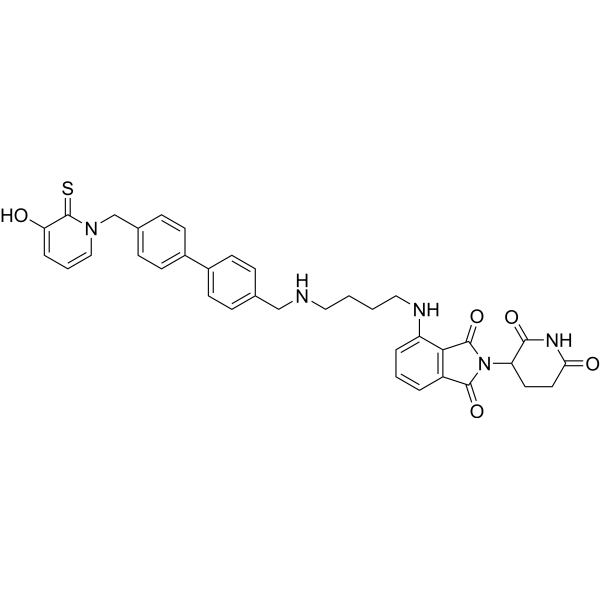
-
- HY-149206
-
|
|
MAP4K
|
Cancer
|
|
HPK1-IN-33 (compound 21) is a potent Hematopoietic Progenitor Kinase 1 (HPK1) inhibitor with a Ki value of 1.7 nM. HPK1-IN-33 inhibits the produce of IL-2 with EC50s of 286, >10000 nM in Jurkat WT and Jurkat HPK1 KO cells, respectively .
|
-
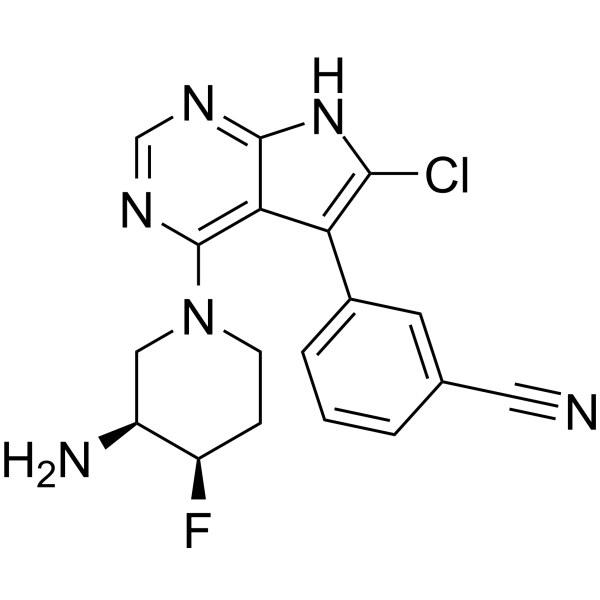
-
- HY-112335
-
|
|
Src
Interleukin Related
|
Cancer
|
|
Lck Inhibitor III (compound 12h) is a potent Lck inhibitor, with an IC50 of 867 nM. Lck Inhibitor III inhibits IL-2 synthesis in Jurkat cells, with an IC50 of 1.270 μM .
|
-
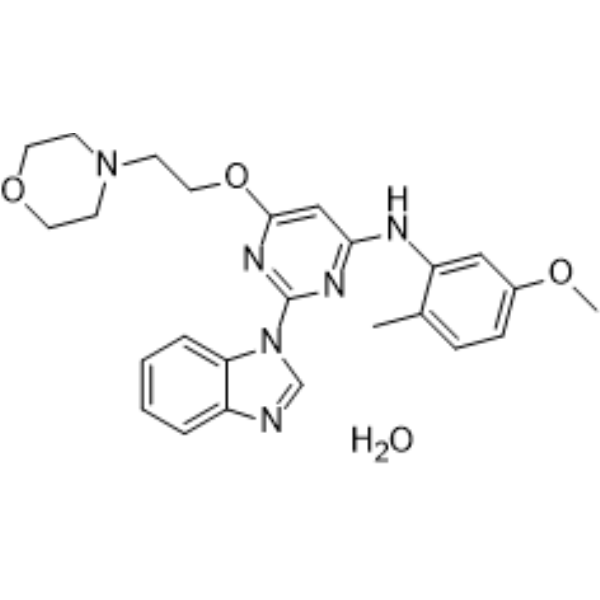
-
- HY-P5870
-
|
|
Potassium Channel
|
Inflammation/Immunology
|
|
KTX-Sp2 is a potassium channel toxin. KTX-Sp2 effectively blocks three types of exogenous voltage-gated potassium channels: Kv1.1, Kv1.2 and Kv1.3. Ktx-Sp2 inhibits endogenous Kv1.3 and suppresses Ca 2+ signaling in Jurkat T cells. Ktx-Sp2 inhibits IL-2 secretion from activated Jurkat T cells .
|
-

-
- HY-153702
-
|
|
JAK
|
Cancer
|
|
JAK-IN-27 (compound 1) is an orally active and potent JAKS family kinase inhibitor with IC50s of 3.0 nM (TYK2), 7.7 nM (JAK1), 629.6 nM (JAK3), respectively. JAK-IN-27 inhibits IFN-α2B-induced phosphorylation of STAT3 in Jurkat cells (IC50=23.7 nM) .
|
-
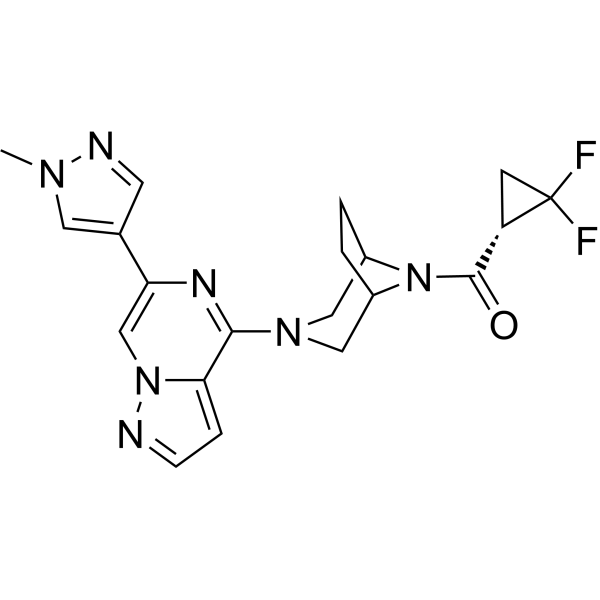
-
- HY-P3083
-
|
|
PKC
|
Inflammation/Immunology
|
|
N-Myristoyl-Lys-Arg-Thr-Leu-Arg is a protein kinase C (PKC) inhibitor with an IC50 value of 75 μM. N-Myristoyl-Lys-Arg-Thr-Leu-Arg inhibits IL-2 receptor induction and IL-2 production in the human leukemic cell line Jurkat .
|
-
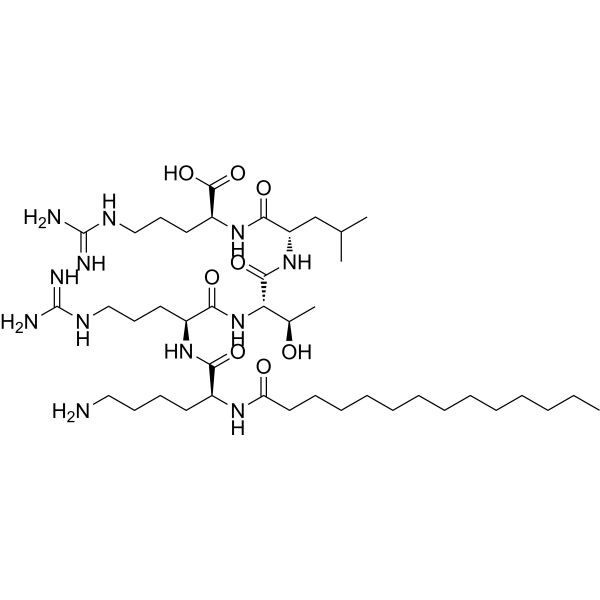
-
- HY-153701
-
|
|
JAK
|
Cancer
|
|
JAK-IN-26 (compound 2) is an orally active JAK inhibitor with good pharmacokinetic characteristics. JAK-IN-26 inhibits IFN-α2B-induced phosphorylation of STAT3 in Jurkat cells (IC50=17.2 nM) .
|
-

-
- HY-145322
-
|
|
Casein Kinase
Molecular Glues
|
Cancer
|
|
TMX-4116 is a casein kinase 1α (CK1α) degrader. TMX-4116 shows the degradation preference for CK1α with DC50s less than 200 nM in MOLT4, Jurkat, and MM.1S cells. TMX-4116 can be used for the research of multiple myeloma .
|
-
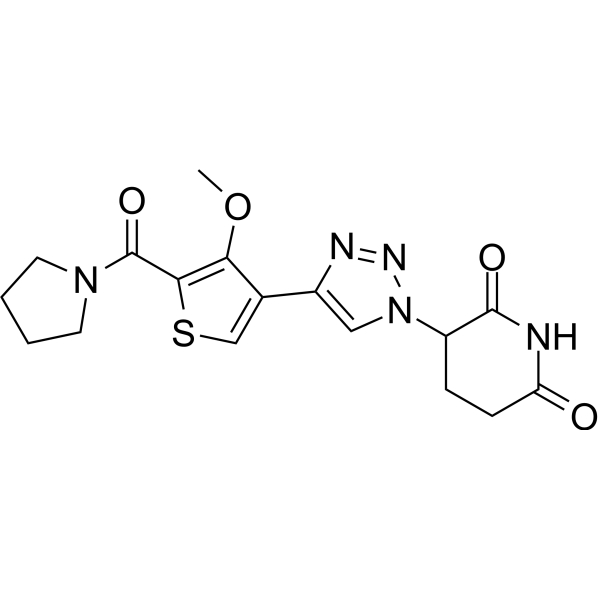
-
- HY-142648A
-
|
|
MALT1
|
Cancer
|
|
(R)-MLT-985 (compound 11) is a potent MALT1 protease inhibitor with an IC50 of 3 nM. (R)-MLT-985 has an IC50 of 20 nM for MALT1-dependent IL-2 production in Jurkat cells. (R)-MLT-985 suppresses growth and aberrant CARD11/BCL10/MALT1 complex signaling in ABC-DLBCL cells .
|
-
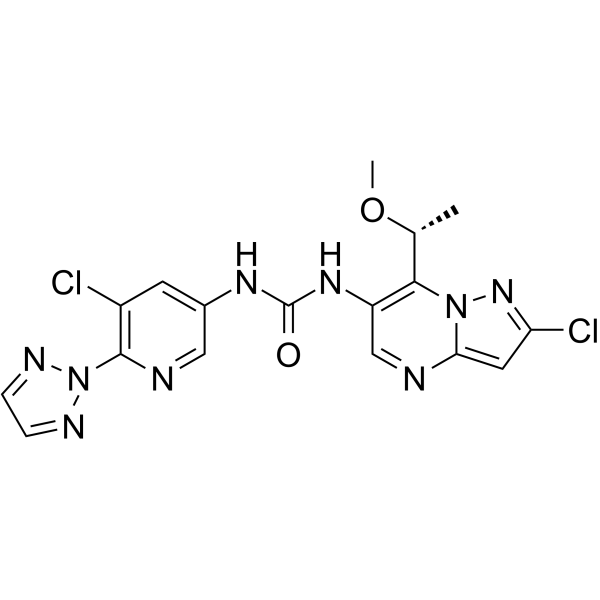
-
- HY-145321
-
|
|
Phosphodiesterase (PDE)
Molecular Glues
|
Cancer
|
|
TMX-4100 is a selective phosphodiesterase 6D (PDE6D) degrader. TMX-4100 shows a high degradation preference for PDE6D with the DC50 values less than 200 nM in MOLT4, Jurkat, and MM.1S cells. TMX-4100 can be used for the research of multiple myeloma .
|
-
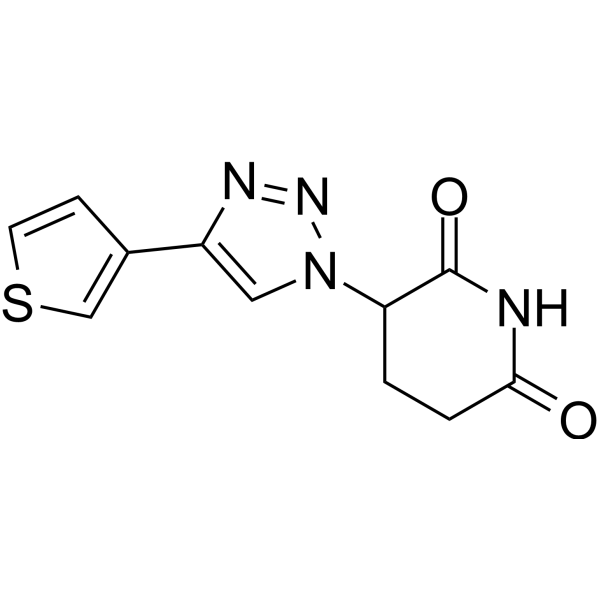
-
- HY-110177
-
|
|
NF-κB
|
Inflammation/Immunology
|
|
SP-100030 is a potent NF-κB and activator protein-1 (AP-1) double inhibitor (IC50s=50 and 50 nM, respectively). SP-100030 inhibits IL-2, IL-8, and TNF-alpha production in Jurkat and other T cell lines. SP-100030 decreases murine collagen-induced arthritis (CIA) .
|
-

-
- HY-19344
-
|
SAR 1118; SHP-606
|
Integrin
|
Inflammation/Immunology
|
|
Lifitegrast (SAR 1118) is a potent integrin antagonist. Lifitegrast blocks the binding of intercellular adhesion molecule 1 (ICAM-1) to lymphocyte function-associated antigen 1 (LFA-1), interrupting the T cell-mediated inflammatory cycle. Lifitegrast inhibits Jurkat T cell attachment to ICAM-1 with an IC50 of 2.98 nM. Lifitegrast can be used for researching dry eye disease .
|
-
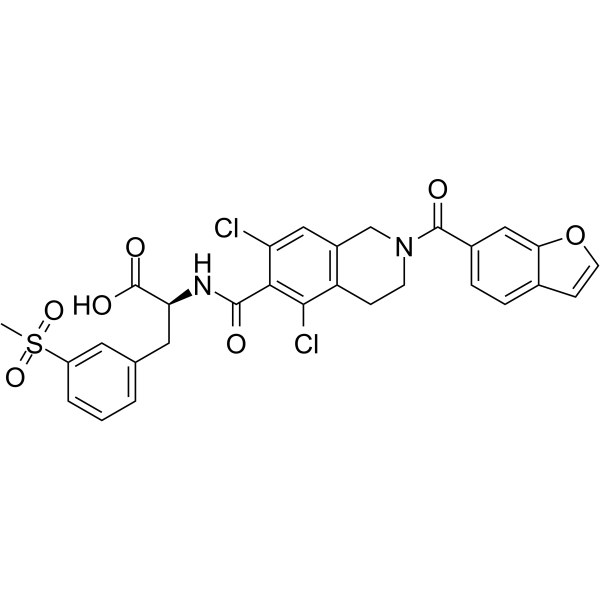
-
- HY-19344A
-
|
SAR 1118 sodium; SHP-606 sodium
|
Integrin
|
Inflammation/Immunology
|
|
Lifitegrast (SAR 1118) sodium is a potent integrin antagonist. Lifitegrast sodium blocks the binding of intercellular adhesion molecule 1 (ICAM-1) to lymphocyte function-associated antigen 1 (LFA-1), interrupting the T cell-mediated inflammatory cycle. Lifitegrast sodium inhibits Jurkat T cell attachment to ICAM-1 with an IC50 of 2.98 nM. Lifitegrast sodium can be used for researching dry eye disease .
|
-
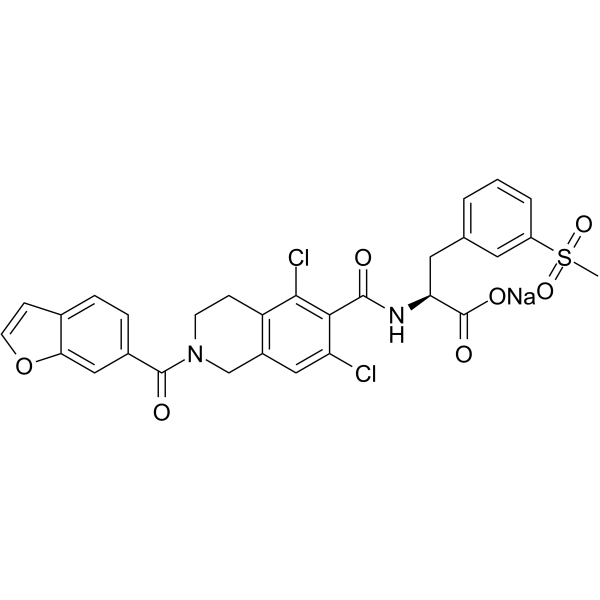
-
- HY-109151
-
|
E6007
|
Others
|
Inflammation/Immunology
|
|
Milategrast is useful as cell adhesion inhibitor or cell infiltration inhibitor. Milategrast in vitro inhibites the adhesion of Jurkat cells to human fibronectin with an IC50 of <5 μM .
|
-
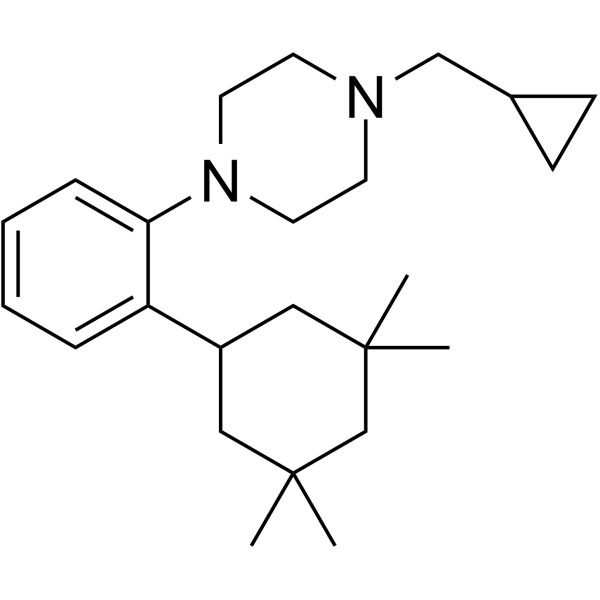
-
- HY-115756
-
|
|
Others
|
Others
|
|
4-Maleimidosalicylic acid is a polar maleimide, and does not suppress IL-2 production in JURKAT T cells .
|
-

-
- HY-N1726
-
|
|
|
|
|
cis-Burchellin is a bioactive neolignan with anti-allergic activity. cis-Burchellin inhibits IL-2 production in Jurkat T-cells .
|
-
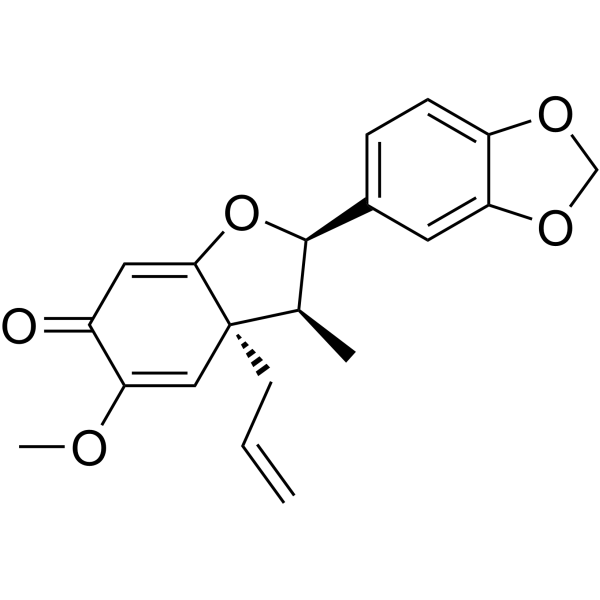
-
- HY-156085
-
|
|
PD-1/PD-L1
|
Cancer
|
|
LP23 is a non-arylmethylamine PD-1/PD-L1 inhibitor (IC50: 16.7 nM) with anti-tumor activity. LP23 restores immune cell function in HepG2/Jurkat T cells and promotes HepG2 cell death. LP23 is active in vivo in the B16-F10 tumor model (TGI=88.6% at 30 mg/kg) .
|
-

-
- HY-126193
-
|
|
NO Synthase
Apoptosis
|
Cancer
|
|
JS-K is a NO donor that reacts with glutathione to generate NO at physiological pH . JS-K inhibits proliferation, induces apoptosis, and disrupts the cell cycle of Jurkat T acute lymphoblastic leukemia cells .
|
-

-
- HY-N7087
-
|
α-Methylene butyrolactone
|
Drug Metabolite
|
|
|
Tulipalin A (α-Methylene butyrolactone) is a glycoside. Tulipalin A is a causative allergen that induces Allergic contact dermatitides . Tulipalin A (α-Methylene butyrolactone) at low dose affects the functionality of immune cells, such as Jurkat T cells .
|
-
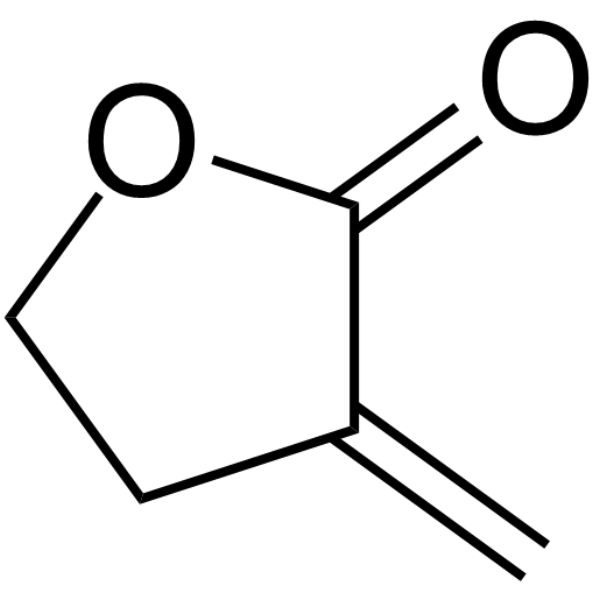
-
- HY-14622
-
|
|
RIP kinase
|
Cancer
|
|
Necrostatin 2 is a potent necroptosis inhibitor. EC50 for inhibition of necroptosis in FADD-deficient Jurkat T cells treated with TNF-α is 0.05 μM.
Necrostatin 2 is also a RIPK1 inhibitor.
|
-
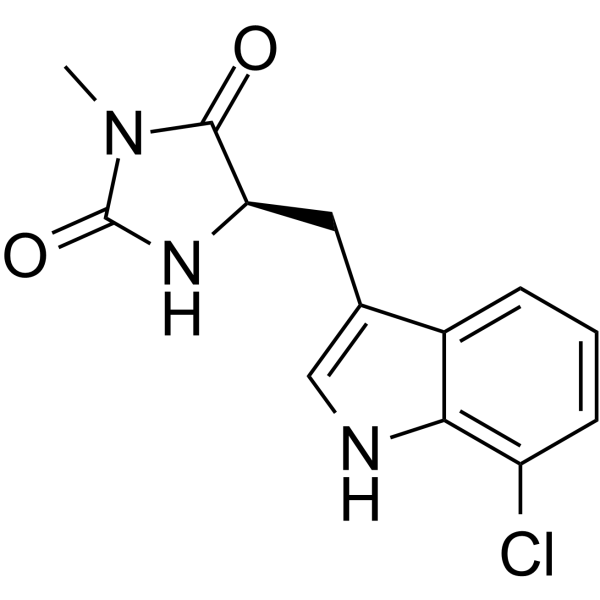
-
- HY-N6681
-
|
|
Caspase
Bacterial
Apoptosis
Antibiotic
|
Infection
|
|
15-acetoxyscirpenol, one of acetoxyscirpenol moiety mycotoxins (ASMs), strongly induces apoptosis and inhibits Jurkat T cell growth in a dose-dependent manner by activating other caspases independent of caspase-3 .
|
-
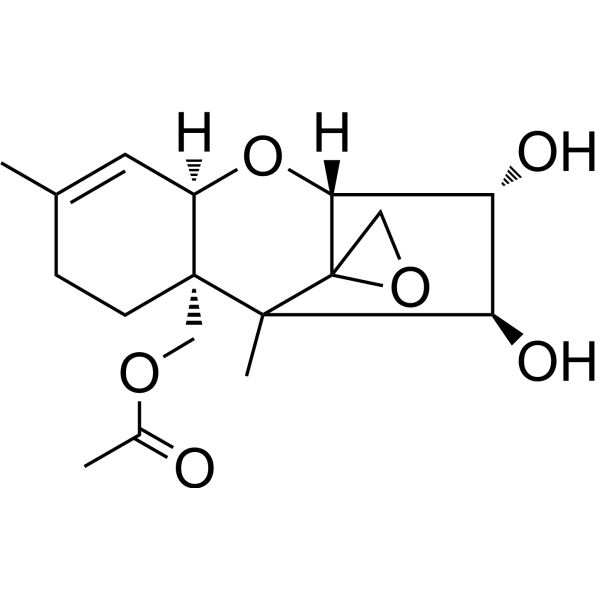
-
- HY-15760
-
-
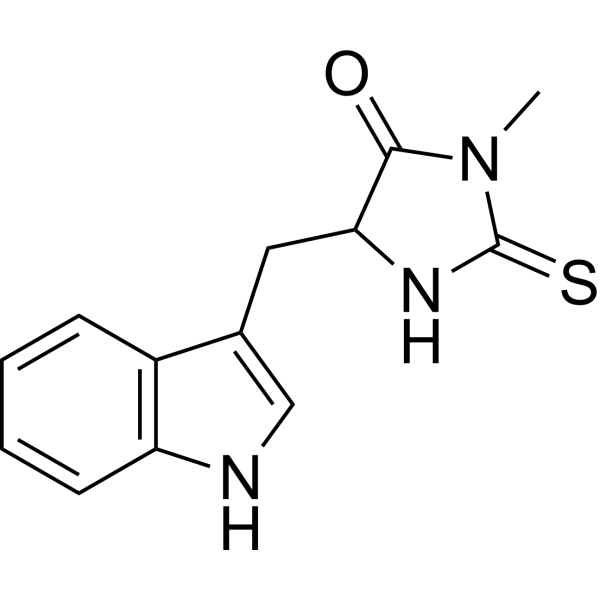
-
- HY-N0990
-
|
|
|
|
|
1,5,15-Trimethylmorindol is an anthraquinone isolated from the leaves of Morinda citrifolia. 1,5,15- trimethylmorindol (25 μg/mL) does not show significant cytotoxic activity on the human T-cell leukemia cell line, Jurkat, by itself but it shows cytotoxicity (IC50 14.5-15.0 μg/mL) when combined with 0.5-1.5 μg/mL of TRAIL in the cell proliferation assay .
|
-
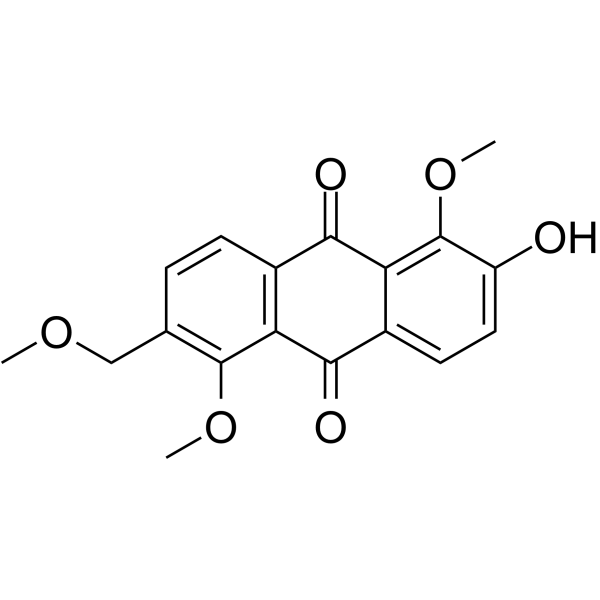
-
- HY-157838
-
|
|
MAP4K
|
Cancer
|
|
HMC-B17 is a selective, orally bioavailable HPK1 inhibitor (IC50 = 1.39 nM) that potentiates anti-PD-L1 efficacy. HMC-B17 potently enhances the IL-2 secretion in Jurkat cells (EC50 = 11.56 nM). HMC-B17 can be used for the research of cancer .
|
-
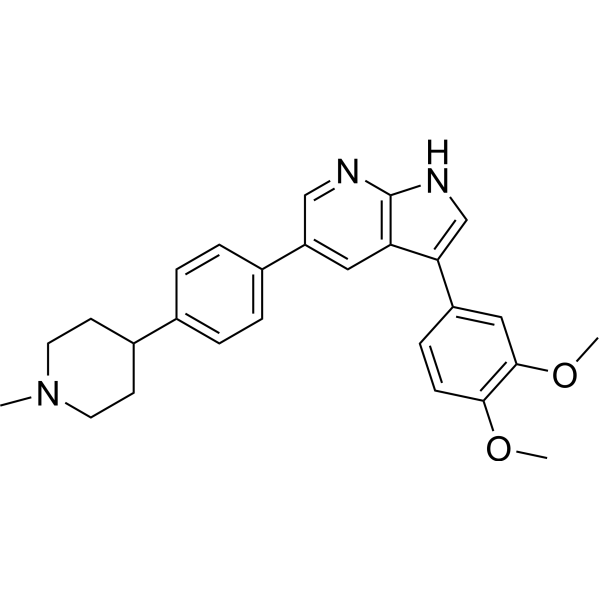
-
- HY-144672
-
-
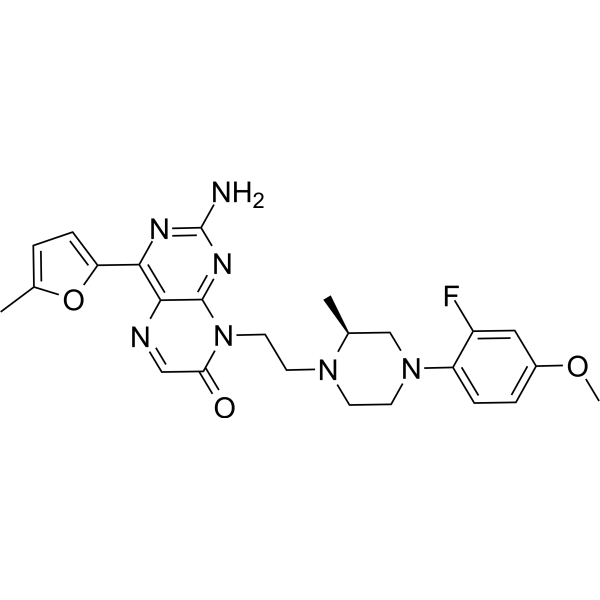
-
- HY-148847
-
|
|
MAP4K
|
Cancer
|
|
HPK1-IN-32 is a potent and selective HPK1 inhibitor with an IC50 of 65 nM. HPK1-IN-32 can be used for the research of HPK1 related disorders or diseases .
|
-
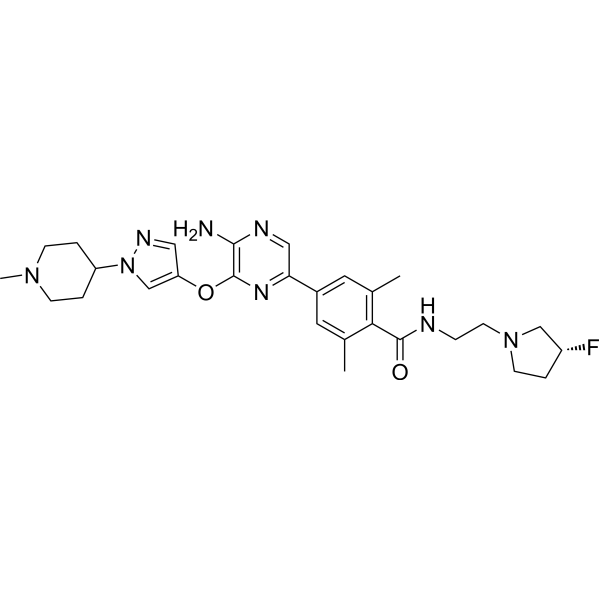
-
- HY-149232
-
|
|
MAP4K
|
Cancer
|
|
HPK1-IN-35 is a potent and selective HPK1 inhibitor with an IC50 value of 3.5 nM. HPK1-IN-35 decreases the expression of p-SLP76 and promotes IL-2 secretion .
|
-
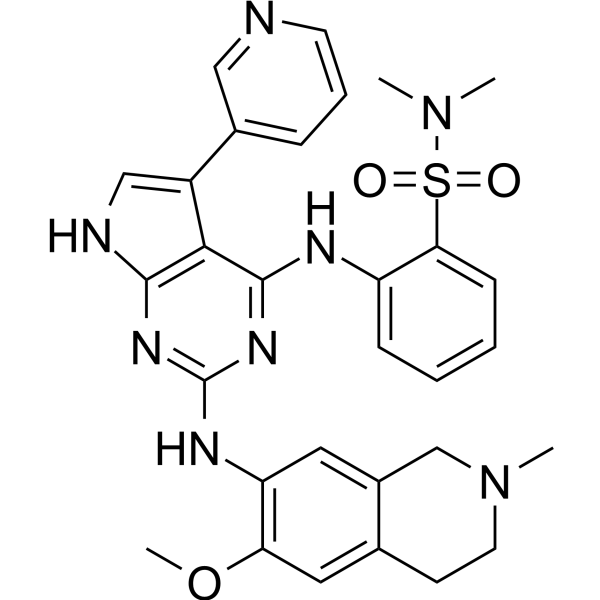
-
- HY-123802
-
|
|
Integrin
|
Cancer
|
|
BIO7662 is a specific α4β1 antagonist. BIO7662 can be used to study α4β1 integrin-ligand interactions .
|
-
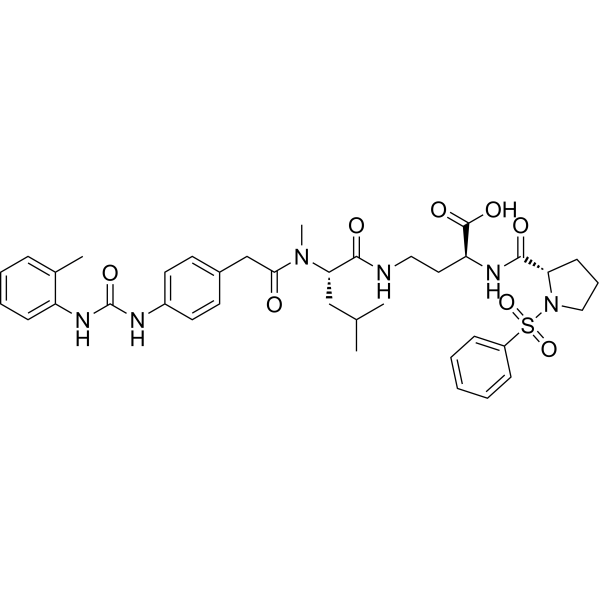
-
- HY-149917
-
|
|
Itk
|
Cancer
|
|
ITK degrader 1 is a highly selective degrader of interleukin-2-inducible T-cell kinase (ITK; DC50=3.6 nM in vivo in mice). ITK degrader 1 induces rapid, and prolonged ITK degradation and suppresses IL-2 secretion (EC50=35.2 nM, Jurkat cells) stimulated by anti-CD3 antibodyin vivo. ITK degrader 1 also shows good plasma exposure levels .
|
-
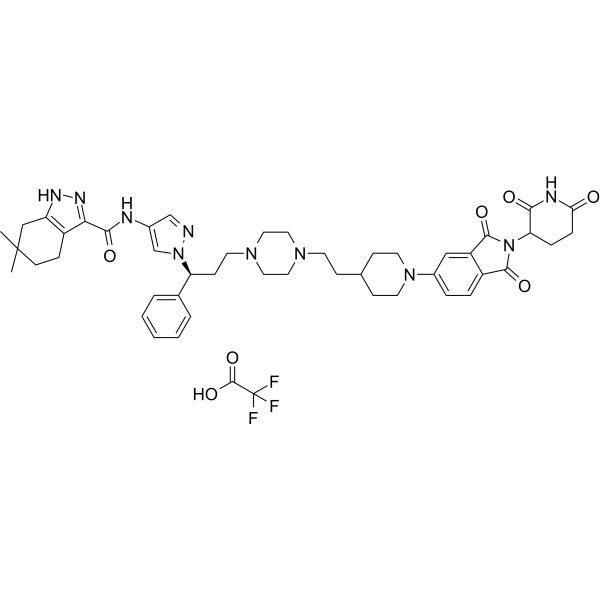
-
- HY-160214
-
|
|
Others
|
Inflammation/Immunology
|
|
Perforin-IN-2 is a benzosulfonamide perforin inhibitor that alleviates transplant rejection during allogeneic bone marrow/stem cell transplantation. Perforin-IN-2 binds to plasma proteins with a binding rate of 99.8%. Perforin-IN-2 requires a higher concentration (> 900 μM) to achieve optimal perforin inhibition in vivo. Perforin-in-2 can effectively inhibit the lytic activity of recombinant perforin on Jurkat T (IC50=6.65 μM) leukemia cells, and also inhibit the death of K562 leukemia target cells .
|
-
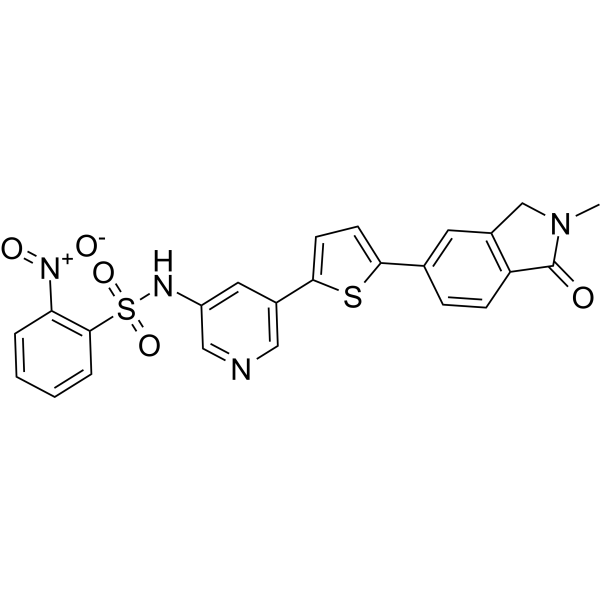
-
- HY-146671
-
|
|
Itk
|
Cancer
|
|
ITK inhibitor 5 (compound 27) is a potent and selective ITK inhibitor with IC50s of 5.6, 25 nM for ITK, BTK, respectively .
|
-
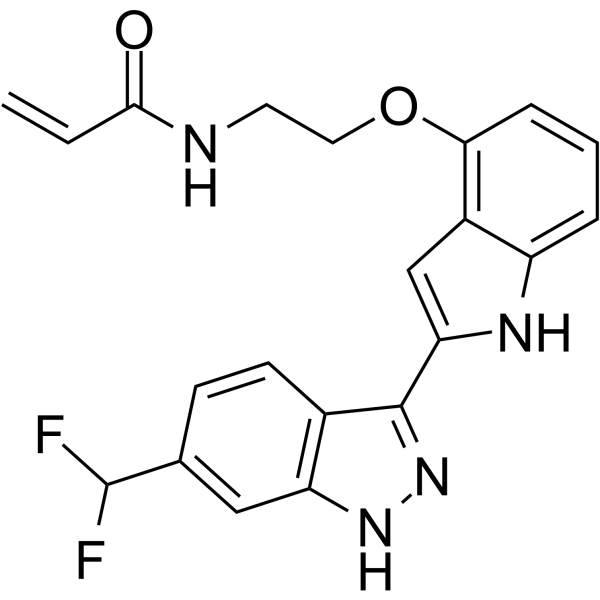
-
- HY-151369
-
|
|
RIP kinase
|
Cardiovascular Disease
Neurological Disease
Metabolic Disease
Inflammation/Immunology
|
|
AV123 (compound 12) is a non-cytotoxic RIPK1 inhibitor (IC50=12.12 µM). AV123 blocks the TNF-α-induced necroptotic (EC50=1.7 μM) but not the apoptotic cell death. AV123 can be used in the study of necrotic chronic conditions such as ischemia-reperfusion injury of the brain, heart and kidney, inflammatory diseases, neurodegenerative diseases and infectious diseases .
|
-

-
- HY-110052
-
|
|
Casein Kinase
|
Cancer
|
|
TBCA is a highly selective CK2 (casein kinase II) inhibitor with an IC50 of 110 nM and a Ki of 77 nM. TBCA shows selectivity for CK2 over CK1, DYRK1A and a panel of 27 other kinases .
|
-

-
- HY-146389
-
|
|
MDM-2/p53
P-glycoprotein
|
Cancer
|
|
Anticancer agent 50 (compound 6) is a potent ABCB1 efflux pump modulator. Anticancer agent 50 shows cytotoxic effects and antiproliferative effects. Anticancer agent 50 decreases the expression of cyclin D1 and induces p53 expression. Anticancer agent 50 has the potential for the research of T-lymphoma .
|
-

-
- HY-N12487
-
|
|
Others
|
Cancer
|
|
TRRAP-IN-1 (compound 1) is a potent inhibitor of MYC:TRRAP interaction that plays an important role in anti-tumor research .
|
-
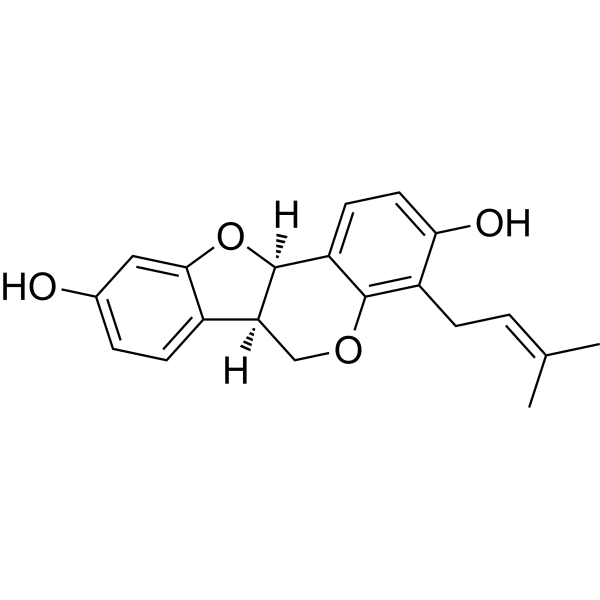
-
- HY-N3119
-
|
|
Apoptosis
|
Cancer
|
|
Paeoniflorigenone, isolated as an active ingredient from the root of moutan cortex, induces apoptosis selectively in the cancer cell lines and exhibits antiproliferative effect .
|
-
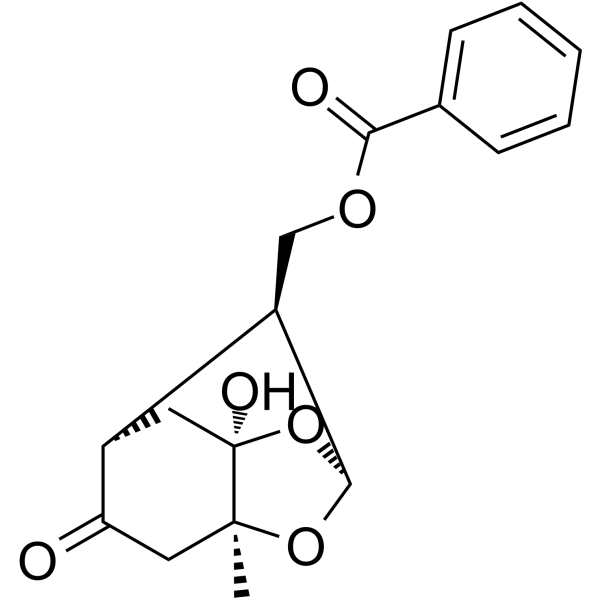
-
- HY-161335
-
|
|
MAP4K
Interleukin Related
IFNAR
|
Cancer
|
|
HPK1-IN-43 (compound 9f) is a HPK1 kinase inhibitor with the IC50 value of 0.32 nM. HPK1-IN-43 inhibits the phosphorylation of the downstream protein SLP-76 and enhances the secretion of interleukin-2 (IL-2) and interferon-γ (IFN-γ). HPK1-IN-43 can be used in cancer research .
|
-
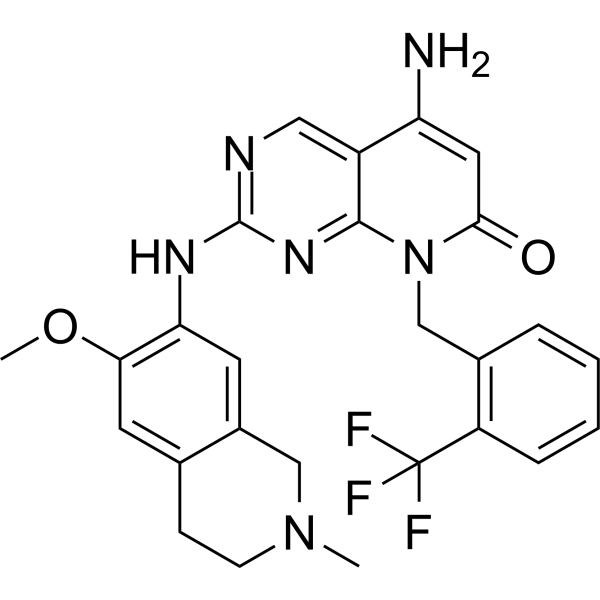
-
- HY-12521
-
|
|
CRAC Channel
|
Inflammation/Immunology
|
|
GSK-5498A is a selective CARC channel inhibitor (IC50: 1 μM). GSK-5498A inhibits mediators release from mast cells and pro-inflammatory cytokines release from T cells. GSK-5498A can be used in the research of inflammatory disorders .
|
-
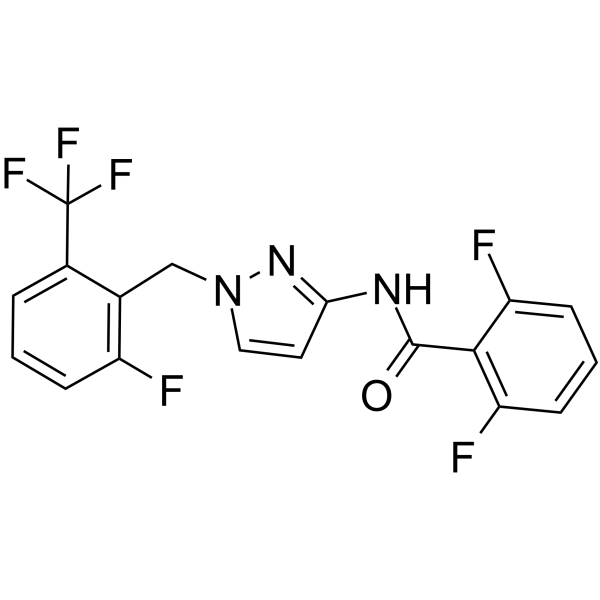
-
- HY-155101
-
|
|
PD-1/PD-L1
|
Cancer
|
|
PD-L1-IN-3 (Compound 4a) is a compound that targets PD-1/PD-L1, the IC50 value and EC50 value is 4.97nM and 2.70 μM for inhibit PD-L1 and Jurkat T cells, respectively. PD-L1-IN-3 can bind PD-L1 dimer to prevent PD-1 binding to PD-L1, therefore blocking PD-1 signaling. PD-L1-IN-3 can be used for lung cancer and melanoma diseases research .
|
-
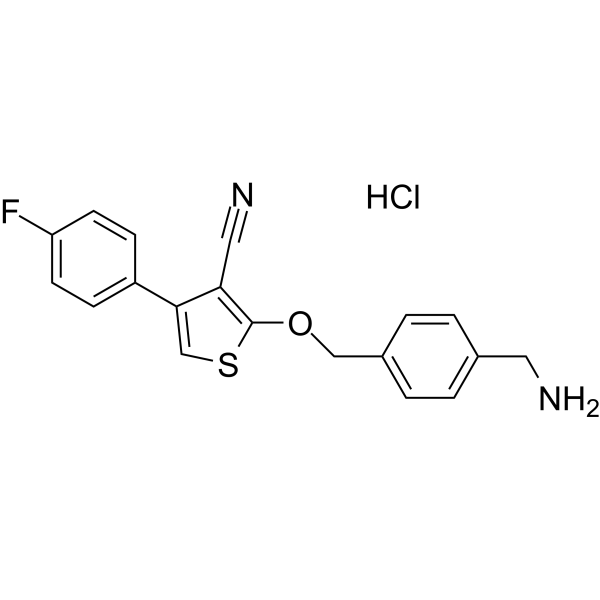
-
- HY-P99445
-
|
APG101; CAN008
|
TNF Receptor
|
Inflammation/Immunology
Cancer
|
|
Asunercept (APG101; CAN008) is a soluble CD95-Fc fusion protein targeting CD95L. Asunercept disrupts CD95/CD95L signaling by selectively binding to CD95L. Asunercept can be used in the research of glioblastoma multiforme (GBM), myelodysplastic syndrome (MDS), and graft-versus-host disease (GvHD) .
|
-
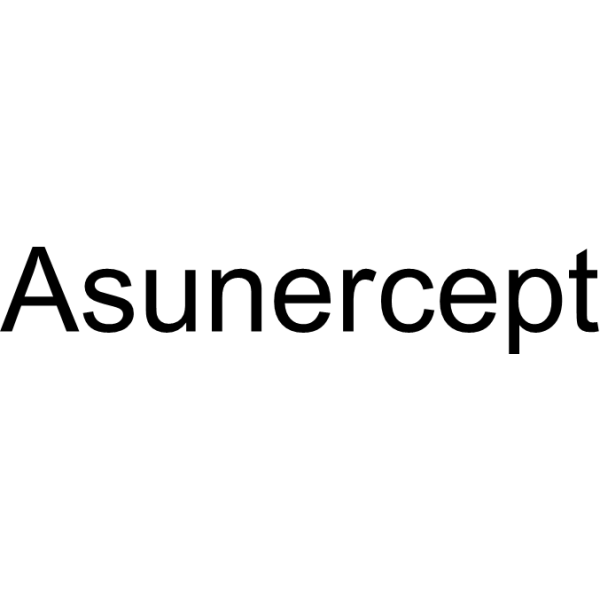
-
- HY-107780
-
|
c-di-GMP; cyclic diguanylate; 5GP-5GP
|
STING
Endogenous Metabolite
|
Cancer
|
|
Cyclic-di-GMP is a STING agonist and a bacterial second messenger that coordinates different aspects of bacterial growth and behavior, including motility, virulence, biofilm formation, and cell cycle progression. Cyclic-di-GMP has anti-cancer cell proliferation activity and also induces elevated CD4 receptor expression and cell cycle arrest. Cyclic-di-GMP can be used in cancer research .
|
-

-
- HY-107780A
-
|
c-di-GMP sodium; cyclic diguanylate sodium; 5GP-5GP sodium
|
STING
Endogenous Metabolite
|
Cancer
|
|
Cyclic-di-GMP sodium is a STING agonist and a bacterial second messenger that coordinates different aspects of bacterial growth and behavior, including motility, virulence, biofilm formation, and cell cycle progression. Cyclic-di-GMP sodium has anti-cancer cell proliferation activity and also induces elevated CD4 receptor expression and cell cycle arrest. Cyclic-di-GMP sodium can be used in cancer research .
|
-

-
- HY-107780B
-
|
c-di-GMP diammonium; cyclic diguanylate diammonium; 5GP-5GP diammonium
|
STING
Endogenous Metabolite
|
Cancer
|
|
Cyclic-di-GMP diammonium is a STING agonist and a bacterial second messenger that coordinates different aspects of bacterial growth and behavior, including motility, virulence, biofilm formation, and cell cycle progression. Cyclic-di-GMP diammonium has anti-cancer cell proliferation activity and also induces elevated CD4 receptor expression and cell cycle arrest. Cyclic-di-GMP diammonium can be used in cancer research .
|
-

-
- HY-110382
-
|
c-di-GMP disodium; cyclic diguanylate disodium; 5GP-5GP disodium
|
STING
Endogenous Metabolite
|
Cancer
|
|
Cyclic-di-GMP disodium is a STING agonist and a bacterial second messenger that coordinates different aspects of bacterial growth and behavior, including motility, virulence, biofilm formation, and cell cycle progression. Cyclic-di-GMP disodium has anti-cancer cell proliferation activity and also induces elevated CD4 receptor expression and cell cycle arrest. Cyclic-di-GMP disodium can be used in cancer research .
|
-

-
- HY-148174
-
|
|
DGK
|
Cancer
|
|
JNJ-3790339, a Ritanserin (HY-10791) analog, is a potent and selective diacylglycerol kinase (DGKα) inhibitor with an IC50 of 9.6 μM. JNJ-3790339 has induction of toxicity in malignant cells, and improves ability to upregulate T cell activation .
|
-
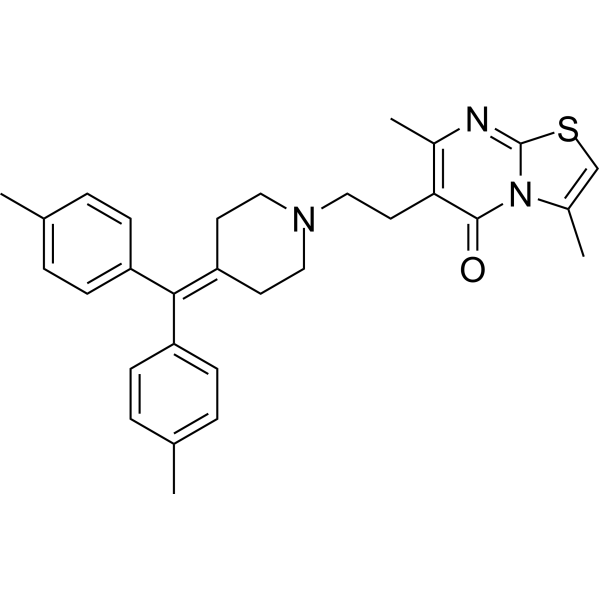
-
- HY-N8287
-
|
|
Microtubule/Tubulin
|
Cancer
|
|
Oxaline is a fungal alkaloid that can be isolated from Penicillium oxalicum. Oxaline inhibits tubulin polymerization, resulting in cell cycle arrest at the M phase .
|
-

-
- HY-14942A
-
|
RTA 744; WP 744; WP 769 hydrochloride
|
Apoptosis
|
Cancer
|
|
Berubicin hydrochloride (RTA 744) is a Doxorubicin (HY-15142A) analogue. Berubicin hydrochloride triggers apoptosis and cell killing in NB cells by activating proapoptotic mediators. Berubicin hydrochloride has proapoptotic and anti-leukemia activities. Berubicin hydrochloride can be used for cancer research .
|
-
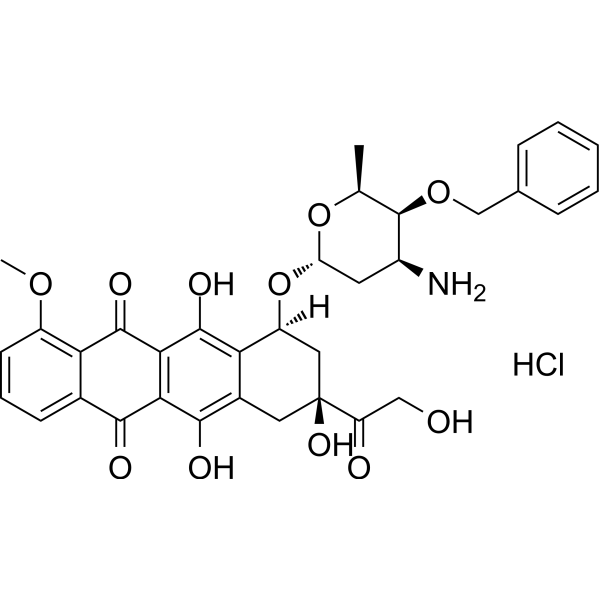
-
- HY-143461
-
|
|
Casein Kinase
|
Cancer
|
|
CK2 inhibitor 3 is a potent CK2 inhibitor with IC50 value of 280 nM. CK2 inhibitor 3 inhibits endocellular CK2, significantly affects viability of tumour cells and shows remarkable selectivity on a panel of 320 kinases .
|
-
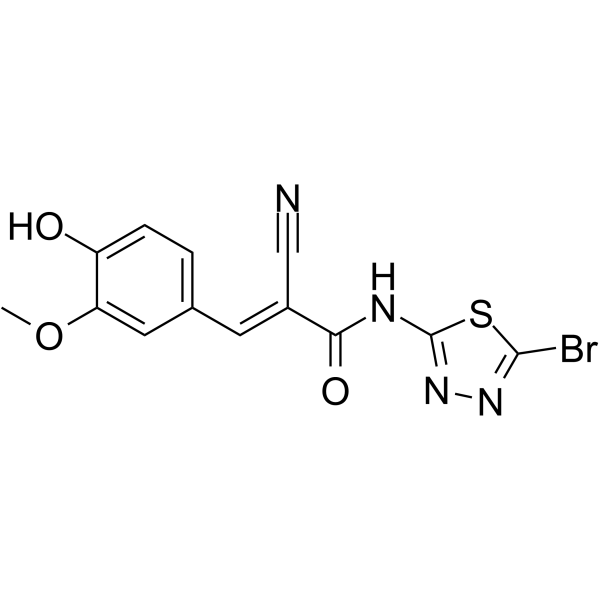
-
- HY-14174
-
|
|
γ-secretase
|
Neurological Disease
Cancer
|
|
MRK-560 is an orally active, brain barrier-penetrating γ-Secretase inhibitor, can potently reduces Aβ peptide in rat brain and cerebrospinal fluid. MRK-560 also decreases mutant NOTCH1 processing by selectively inhibiting PSEN1. MRK-560 can be used in studies of Alzheimer's disease and T-cell acute lymphoblastic leukaemia (T-ALL) .
|
-
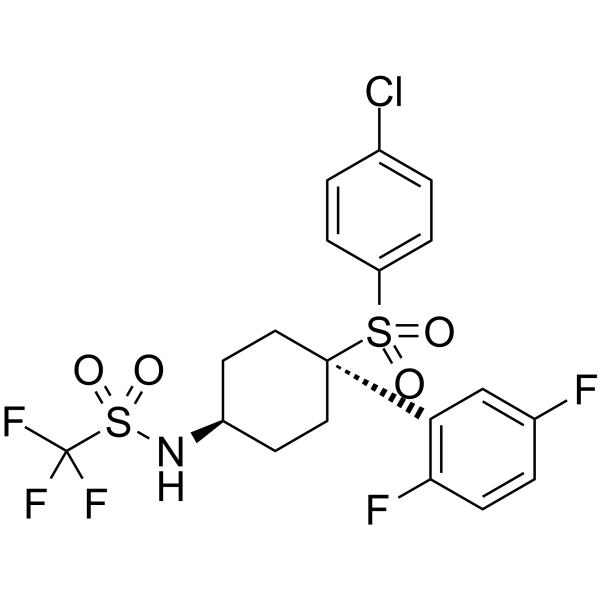
-
- HY-151426
-
|
|
Apoptosis
|
Cancer
|
|
Anticancer agent 83 is a potent anticancer agent, inhibits LOX IMVI cells growth with a GI50 value of 0.15 mM. Anticancer agent 83 reduces mitochondrial membrane potential and induces DNA damage to induces leukemia cells apoptosis .
|
-

- HY-156578
-
|
|
DGK
HIV
|
Infection
Cancer
|
|
DGKα-IN-8 (Example 51) is a DGKα inhibitor (IC50=22.491 nM; EC50=0.256 nM). DGKα-IN-8 can be used to study cancer, including solid tumors, and viral infections, such as HIV or hepatitis B virus infection .
|
-
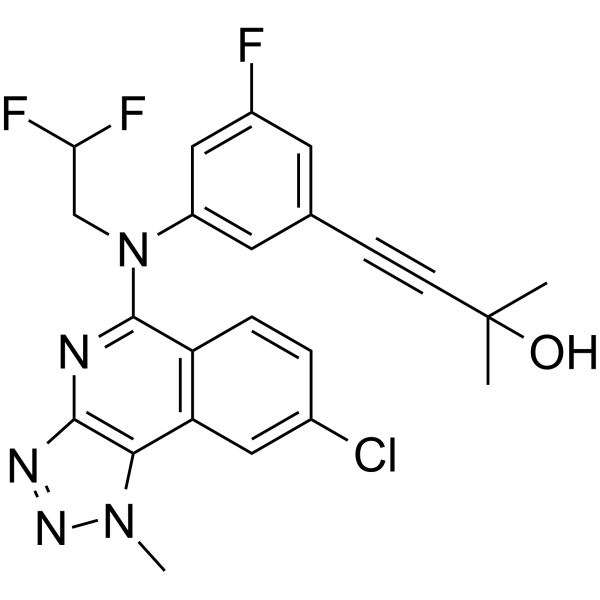
- HY-124798
-
|
|
mTOR
|
Neurological Disease
Inflammation/Immunology
Cancer
|
Rheb inhibitor NR1 is a Rheb inhibitor with an IC50 of 2.1 µM in the Rheb-IVK assay. Rheb inhibitor NR1 can directly bind Rheb in the switch II domain and selectively inhibit the activation of mechanistic target of rapamycin complex 1 (mTORC1). Rheb inhibitor NR1 inhibits the phosphorylation of mTORC1 driven T389pS6K1 and increases the phosphorylation of S473pAKT in a dose-dependent manner. Rheb inhibitor NR1 does not influence mTORC2 activity .
(Rheb-IVK: Rheb-dependent mTORC1 kinase activity)
|
-

- HY-149773S
-
|
|
MAP4K
|
Inflammation/Immunology
Cancer
|
|
HPK1-IN-40 (compound 49) is a potent and selective HPK1 inhibitor with an IC50 of 0.9 nM. HPK1-IN-40 reinvigorates T-cell receptor (TCR) signaling, promoting T-cell function and cytokine production in T cells while having anti-cancer activity .
|
-

- HY-136250
-
|
|
PROTACs
CDK
|
Cancer
|
|
BSJ-03-204 is a PROTAC connected by ligands for Cereblon and CDK. BSJ-03-204 is a potent and selective Palbociclib-based CDK4/6 dual degrader (PROTAC), with IC50s of 26.9 nM and 10.4 nM for CDK4/D1 and CDK6/D1, respectively. BSJ-03-204 does not induce IKZF1/3 degradation and has anti-cancer activity .
|
-
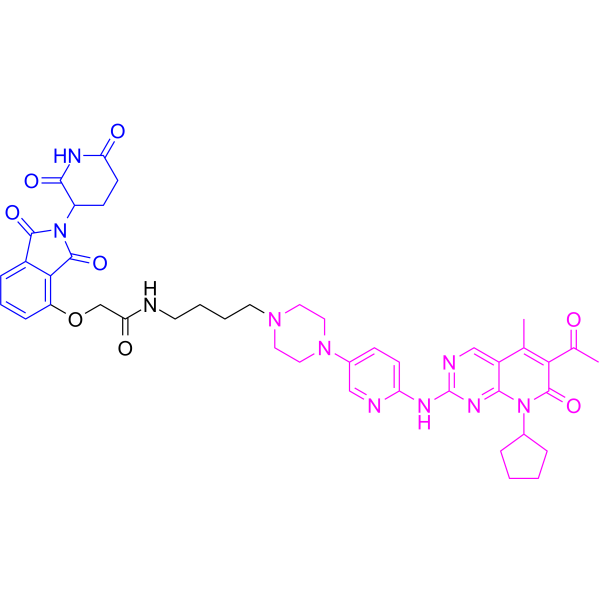
- HY-146672
-
|
|
Itk
|
Cancer
|
|
ITK inhibitor 6 (compound 43) is a potent and selective ITK inhibitor with IC50s of 4 nM, 133 nM, 320 nM, 2360 nM, 155 nM for ITK, BTK, JAK3, EGFR, LCK, respectively. ITK inhibitor 6 inhibits phosphorylation of PLCγ1 and ERK1/2. ITK inhibitor 6 shows antiproliferative activities .
|
-
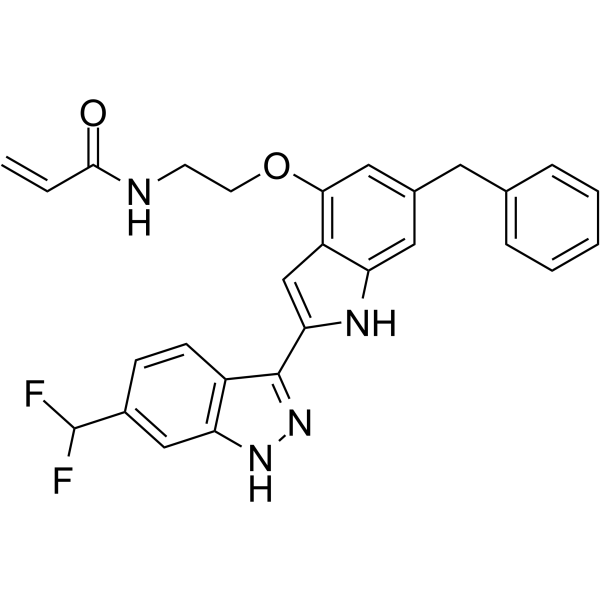
- HY-136250A
-
|
|
PROTACs
CDK
|
Cancer
|
|
BSJ-03-204 triTFA is a PROTAC connected by ligands for Cereblon and CDK. BSJ-03-204 triTFA is a potent and selective Palbociclib-based CDK4/6 dual degrader (PROTAC), with IC50s of 26.9 nM and 10.4 nM for CDK4/D1 and CDK6/D1, respectively. BSJ-03-204 triTFA does not induce IKZF1/3 degradation and has anti-cancer activity .
|
-
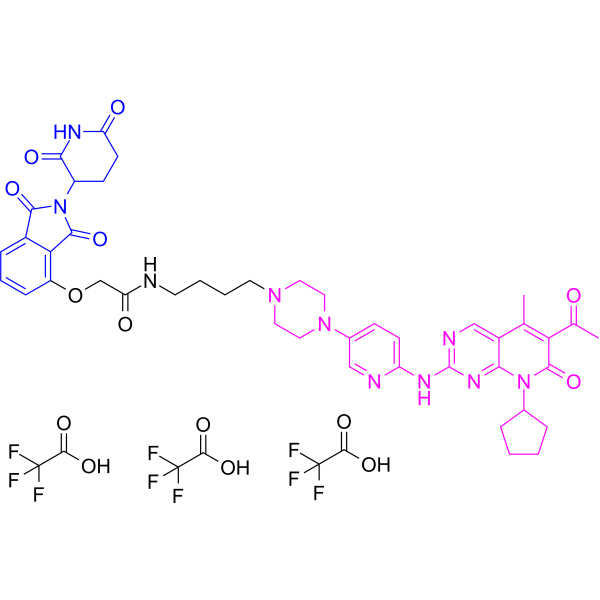
- HY-148369
-
|
|
PROTACs
Deubiquitinase
Apoptosis
MDM-2/p53
|
Cancer
|
|
U7D-1 is a first-in-class potent and selective USP7 (ubiquitin-specific protease 7) PROTAC degrader, with a DC50 of 33 nM in RS4;11 cells. U7D-1 shows anticancer activity. U7D-1 induces apoptosis in Jeko-1 cells .
|
-
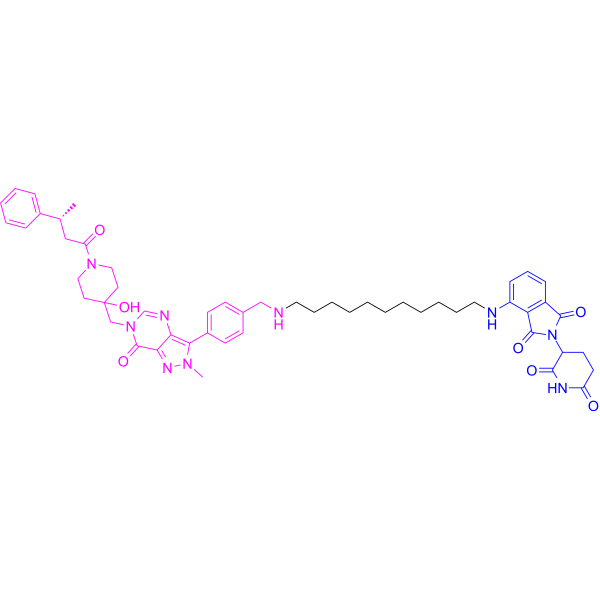
- HY-134050
-
|
Apt-1
|
RIP kinase
Autophagy
Apoptosis
Beclin1
Necroptosis
|
Inflammation/Immunology
|
|
Apostatin-1 (Apt-1) is a potent TRADD inhibitor. Apostatin-1 can bind with TRADD-N (KD=2.17 μM), disrupting its binding to both TRADD-C and TRAF2. Apostatin-1 modulates the ubiquitination of RIPK1 and beclin 1. Apostatin-1 blocks apoptosis and restores cellular homeostasis by activating autophagy in cells with accumulated mutant tau, α-synuclein, or huntingtin .
|
-
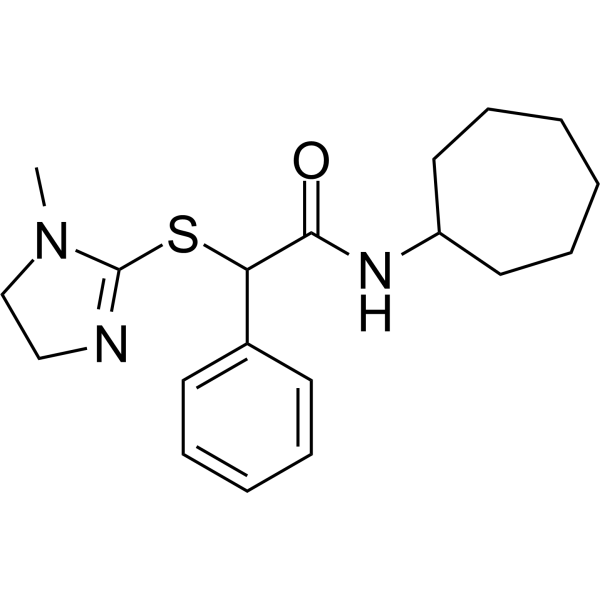
- HY-W011303
-
-
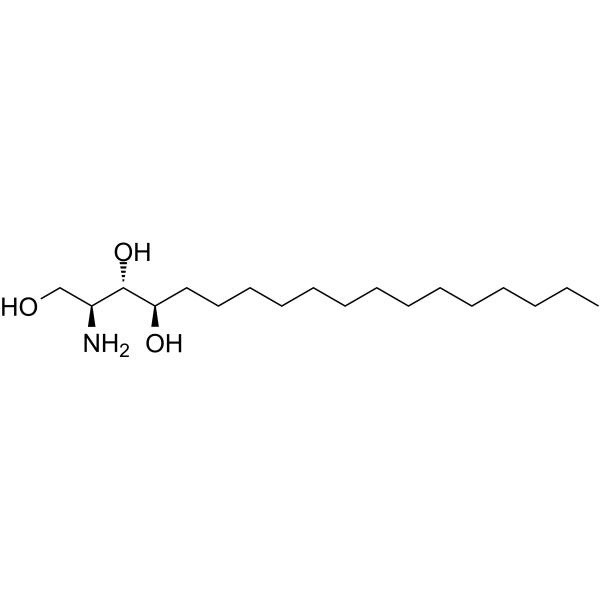
| Cat. No. |
Product Name |
Target |
Research Area |
-
- HY-P5870
-
|
|
Potassium Channel
|
Inflammation/Immunology
|
|
KTX-Sp2 is a potassium channel toxin. KTX-Sp2 effectively blocks three types of exogenous voltage-gated potassium channels: Kv1.1, Kv1.2 and Kv1.3. Ktx-Sp2 inhibits endogenous Kv1.3 and suppresses Ca 2+ signaling in Jurkat T cells. Ktx-Sp2 inhibits IL-2 secretion from activated Jurkat T cells .
|
-
- HY-P3083
-
|
|
PKC
|
Inflammation/Immunology
|
|
N-Myristoyl-Lys-Arg-Thr-Leu-Arg is a protein kinase C (PKC) inhibitor with an IC50 value of 75 μM. N-Myristoyl-Lys-Arg-Thr-Leu-Arg inhibits IL-2 receptor induction and IL-2 production in the human leukemic cell line Jurkat .
|
| Cat. No. |
Product Name |
Target |
Research Area |
-
- HY-P99445
-
|
APG101; CAN008
|
TNF Receptor
|
Inflammation/Immunology
Cancer
|
|
Asunercept (APG101; CAN008) is a soluble CD95-Fc fusion protein targeting CD95L. Asunercept disrupts CD95/CD95L signaling by selectively binding to CD95L. Asunercept can be used in the research of glioblastoma multiforme (GBM), myelodysplastic syndrome (MDS), and graft-versus-host disease (GvHD) .
|
| Cat. No. |
Product Name |
Category |
Target |
Chemical Structure |
| Cat. No. |
Product Name |
Chemical Structure |
-
- HY-149773S
-
|
|
|
HPK1-IN-40 (compound 49) is a potent and selective HPK1 inhibitor with an IC50 of 0.9 nM. HPK1-IN-40 reinvigorates T-cell receptor (TCR) signaling, promoting T-cell function and cytokine production in T cells while having anti-cancer activity .
|
-

Your information is safe with us. * Required Fields.
Inquiry Information
- Product Name:
- Cat. No.:
- Quantity:
- MCE Japan Authorized Agent:



































































